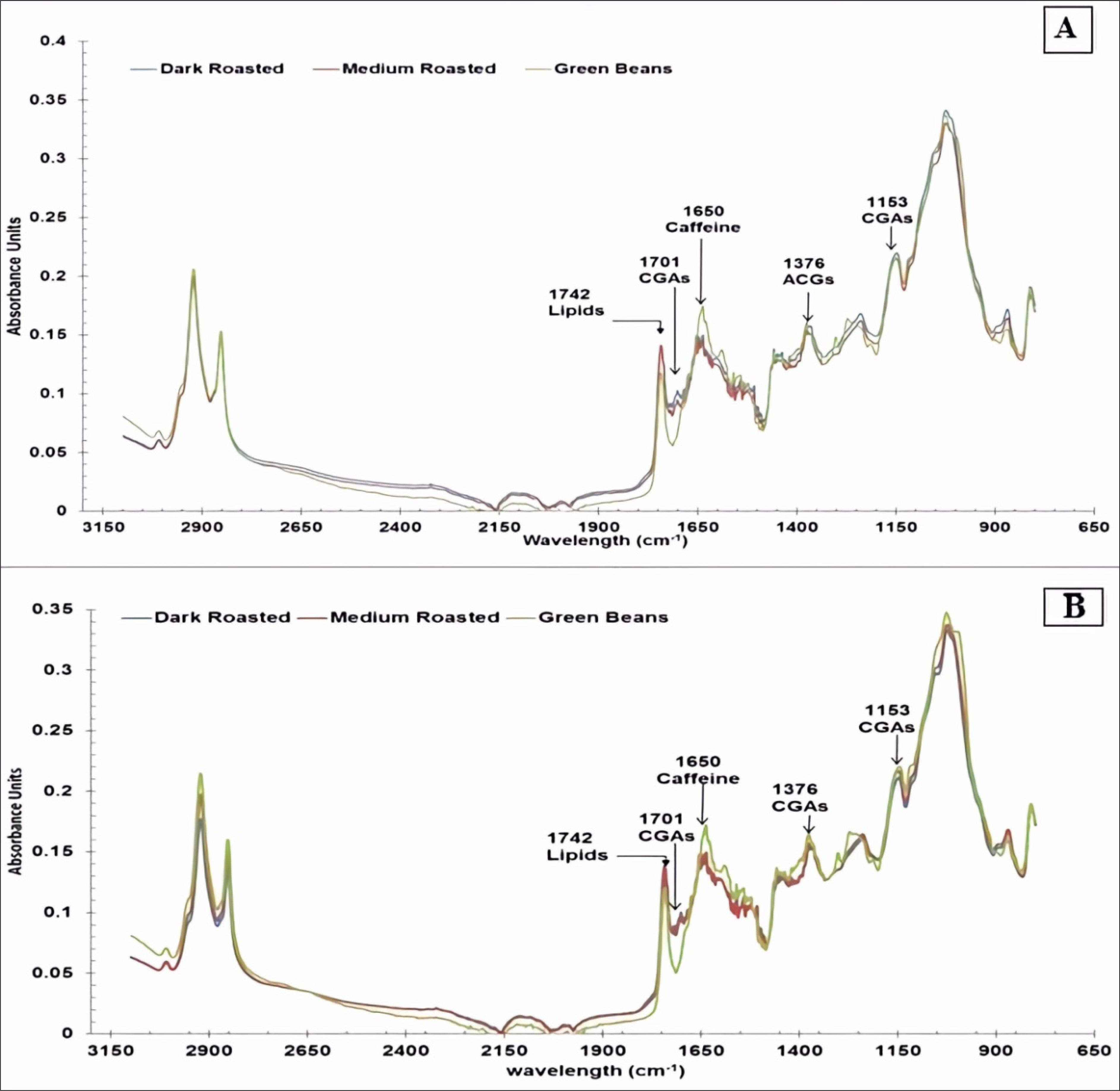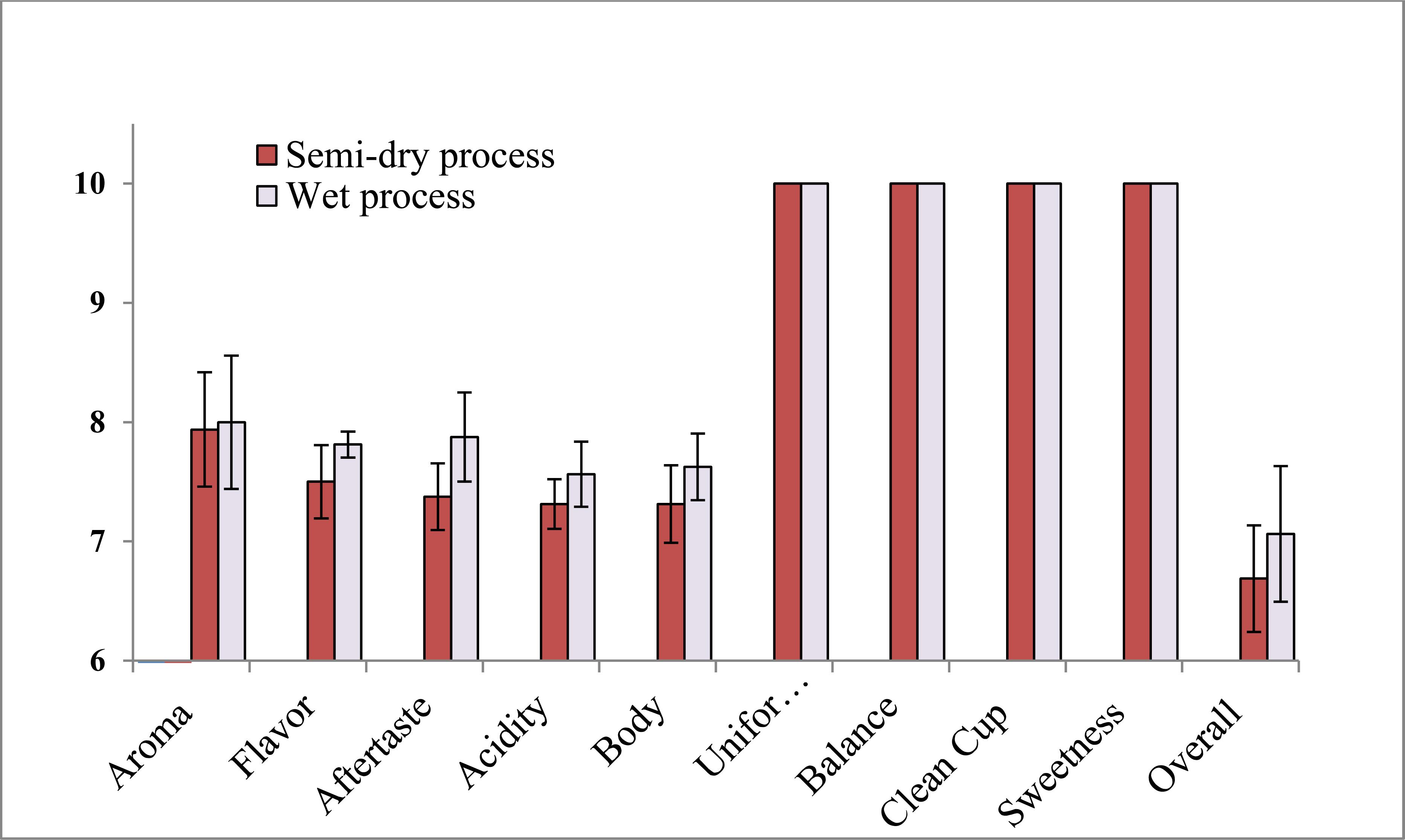ABSTRACT
The objective of this work was to study the influence of two postharvest processing methods on the biochemical composition and sensory analysis of a Colombian specialty coffee. For this purpose, coffee beans (Coffea arabica) of the Castillo variety were collected and processed using the wet and semi-dry methods, and the drying process was conducted in a sun drier prototype with a plastic parabolic cover, with a maximum drying air temperature of 50 °C; green coffee beans were managed according to the official Specialty Coffee Association cupping protocol and roasted to a medium and dark degree. Physicochemical determinations (pH, color, titratable acidity, caffeine content, and chlorogenic acid quantification) in green coffee and roasted coffee beans were performed; the sensory analysis was performed by a panel of trained tasters. The wet and semi-dry processing methods resulted in differences in color parameters, pH values, and caffeine content. However, the titratable acidity, chlorogenic acid, and sensory evaluation did not have any difference; therefore, the type of coffee processing method used is not relevant to the final chemical properties of the roasted coffee (i.e., the Castillo variety) evaluated in this study; the coffee cup score is also not affected, and the post-fermentation washing process can be dispensed with.
KEYWORDS
caffeine; coffee roasting; coffee processing; cup quality; chlorogenic acids


